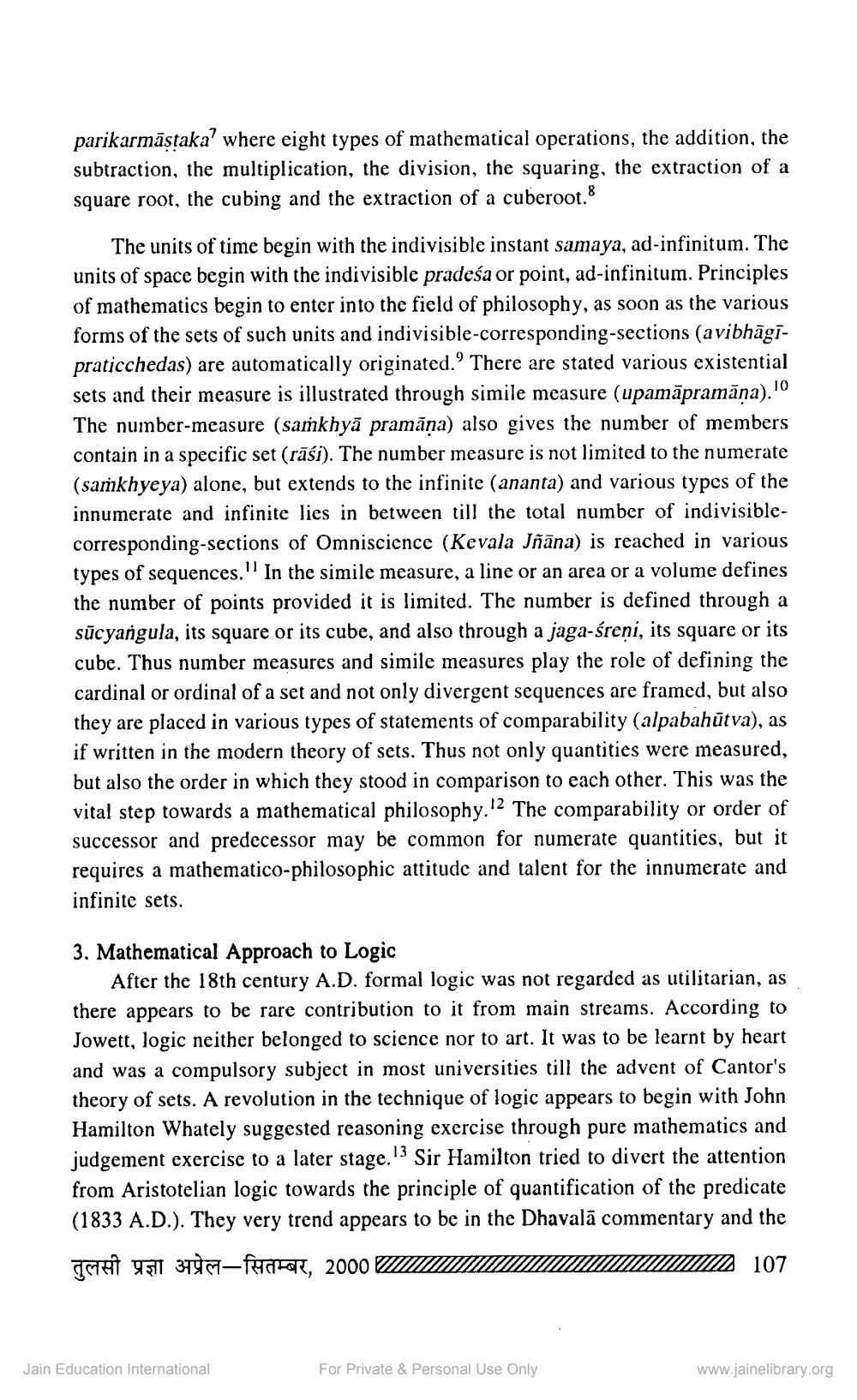________________
parikarmāstaka' where eight types of mathematical operations, the addition, the subtraction, the multiplication, the division, the squaring, the extraction of a square root, the cubing and the extraction of a cuberoot.8
The units of time begin with the indivisible instant samaya, ad-infinitum. The units of space begin with the indivisible pradeśa or point, ad-infinitum. Principles of mathematics begin to enter into the field of philosophy, as soon as the various forms of the sets of such units and indivisible-corresponding-sections (avibhāgipraticchedas) are automatically originated. There are stated various existential sets and their measure is illustrated through simile measure (upamāpramāņa).IO The number-measure (samkhyā pramāna) also gives the number of members contain in a specific set (rāśi). The number measure is not limited to the numerate (samkhyeya) alone, but extends to the infinite (ananta) and various types of the innumerate and infinite lies in between till the total number of indivisiblecorresponding-sections of Omniscience (Kevala Jñāna) is reached in various types of sequences." In the simile measure, a line or an area or a volume defines the number of points provided it is limited. The number is defined through a sūcyangula, its square or its cube, and also through a jaga-śreņi, its square or its cube. Thus number measures and simile measures play the role of defining the cardinal or ordinal of a set and not only divergent sequences are framed, but also they are placed in various types of statements of comparability (alpabahūtva), as if written in the modern theory of sets. Thus not only quantities were measured, but also the order in which they stood in comparison to each other. This was the vital step towards a mathematical philosophy.!2 The comparability or order of successor and predecessor may be common for numerate quantities, but it requires a mathematico-philosophic attitude and talent for the innumerate and infinite sets.
3. Mathematical Approach to Logic
After the 18th century A.D. formal logic was not regarded as utilitarian, as there appears to be rare contribution to it from main streams. According to Jowett, logic neither belonged to science nor to art. It was to be learnt by heart and was a compulsory subject in most universities till the advent of Cantor's theory of sets. A revolution in the technique of logic appears to begin with John Hamilton Whately suggested reasoning exercise through pure mathematics and judgement exercise to a later stage.13 Sir Hamilton tried to divert the attention from Aristotelian logic towards the principle of quantification of the predicate (1833 A.D.). They very trend appears to be in the Dhavalā commentary and the TMAP 4511 37857–finare, 2000 WINT
I ID 107
Jain Education International
For Private & Personal Use Only
www.jainelibrary.org




